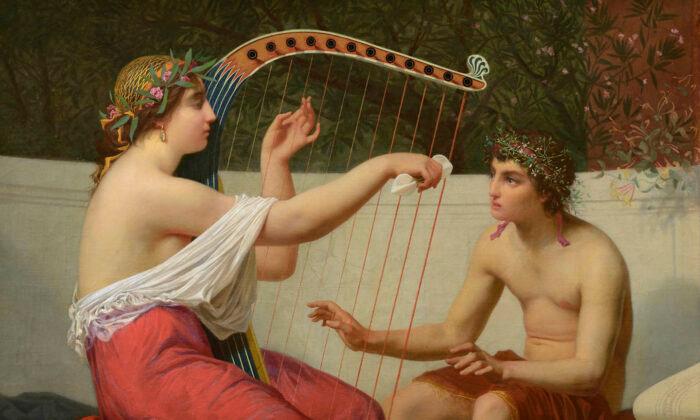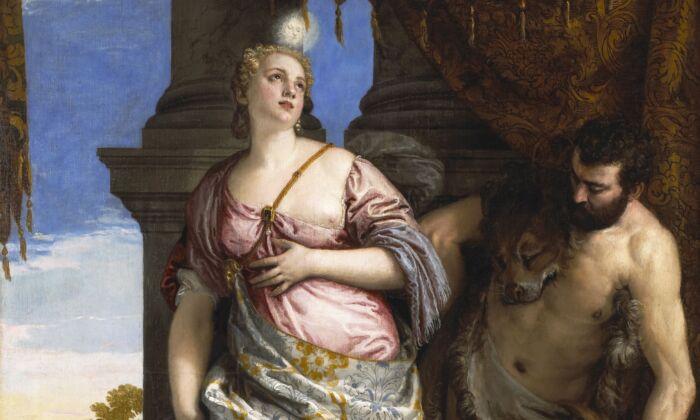Consider the lilies how they grow: they toil not, they spin not; and yet I say unto you, that Solomon in all his glory was not arrayed like one of these. —Luke 12:27Lilies are a powerful symbol throughout the Christian Bible, and this becomes most apparent during Easter. In traditional European art, lilies are most closely associated with the Virgin Mary. As a symbol of purity, lilies also represent Christ’s sinless nature. Lilies have also been associated with the Resurrection of Christ, which is what the Easter holiday observes and celebrates.
While lilies are known today as a symbol of Easter, viewing images of the Virgin Mary is a relevant starting point for understanding the history of this symbolism. According to Christian, specifically Catholic, beliefs, the angel Gabriel came to the Virgin Mary and told her that she would become the mother of the Christ, and this child should be named Jesus. This event is called the Annunciation (Luke 1:26–39).
The Annunciation is observed as a holy day on March 25, precisely nine months before December 25, the date that Jesus’ birth is celebrated. Since the Annunciation is celebrated every year on March 25, it coincides with springtime when lilies are in full bloom. The Annunciation is one of the most frequently depicted topics in traditional European art.
The first known artworks representing the Annunciation come from Gothic churches, dating to the 12th century CE. These early artworks include flowers in vases, but gradually the lily became the standard. Because this subject has been depicted for centuries, Annunciation scenes span a wide variety of styles and compositions. However, lilies are an enduring symbol of Mary’s purity and are featured in the vast majority of these artworks.
Comparing a few examples demonstrates how the art styles change while maintaining the presence of lilies. The Northern Renaissance artist Jan van Eyck painted The Annunciation (fig. 1) in 1434–1436, most likely as an altarpiece. The artist has chosen a temple for his setting and the interior reveals important messages to onlookers.

The bottom half of the building, where Mary and Gabriel stand, is noticeably bright. This suggests Christ’s imminent Incarnation, as he is referred to as the “Light of the World” (Matthew 5:14). The floor tiles depict scenes from the Old Testament, foreshadowing the salvation of humanity through Christ. Mary wears a robe of blue, which was reserved for royalty in van Eyck’s time, and the empty stool in front of her symbolizes Christ’s throne. Notably, the vase full of lilies has been placed halfway between Mary and the symbol of Christ’s throne. Visually, Mary and Christ are connected through these lilies.
Famed Italian Renaissance artist Leonardo da Vinci created his own interpretation of the Annunciation in 1472–1475 (fig. 2). Painted while he was still an apprentice to his mentor, Andrea del Verrocchio, it is one of Leonardo’s earliest works. Leonardo has chosen an enclosed garden for the setting: this is symbolic of Mary’s virginity. Mary is seated in front of a Renaissance-style building, suggesting the eternal nature of this event.
Following older examples, Leonardo depicts Mary with a halo, and the angel Gabriel offers her a bouquet of Madonna lilies. This specific type of lily is a symbol of the city of Florence, where this artwork was painted. Leonardo therefore connects Florence to Mary’s blessing.

The symbolic significance of lilies and the Virgin Mary is not only for paintings. A porcelain sculpture from Germany, Virgin of the Immaculate Conception, shows Mary holding lilies in a way that resembles a royal scepter. She stands victoriously atop a serpent, indicating her role, in the redemption of humanity, as the mother of Christ. This triumph of Mary over Original Sin (represented by the serpent) occurs on a globe, demonstrating that all the world has been redeemed.

The connection between Mary and lilies is so powerful that Mary, herself, does not need to be represented in a painting, for viewers to understand that she is the subject. One example is by Orsola Maddalena Caccia. Her “Flowers in a Grotesque Vase” features a variety of flowers with no human figures. The artist, a nun, draws on an established visual vocabulary to refer to Christian themes, and Mary is represented by the lily. Caccia’s painting captures artists’ enduring interest in painting botanical subjects, naturalistically, while imbuing the composition with layers of spiritual meaning.

Beyond the Annunciation, lilies are present in other key events in the lives of Mary and Jesus. While not an Easter or springtime subject, lilies are found in representations of the Adoration of the Magi. This refers to the three kings (or wise men) visiting the newborn Christ child. In a tapestry by Morris & Co., the figures are shown in a lush garden, characteristic of designer William Morris’s style.
An angel visually separates the Holy Family and the Magi, but lilies are present throughout the scene. This biblical event, called the Epiphany, is observed each year on Jan. 6. Although lilies are not in bloom during the winter, the symbolic significance of the flower merits their inclusion in these artworks.

The lily has a role in communicating Christ’s role as savior, although examples in art are less common than when the Virgin Mary is the subject. Petrus Christus created a profound portrayal of Christ flanked by two angels. This Northern Renaissance painting features Christ displaying his wounds, indicating that he has been crucified and has risen, as the Easter holiday observes.
Christ is depicted from the waist up and viewers are invited to meet his gaze, lending an intimate quality to the scene. One angel holds lilies of mercy, while the second angel wields a sword of divine judgment. By including these angels with an image of Christ, viewers are assured of Christ’s redemption of humanity (mercy) while they are reminded that they must answer for their sins (judgment).

Although lilies are commonly featured in the biblical scenes, described above, they are not typically found in artwork representing the Crucifixion or Resurrection of Christ. Rather, these scenes feature a catalog of symbols all their own. Today, Easter lilies are ubiquitous throughout springtime and can found in every manner of decoration, and every bouquet includes them.
However, the species of lily most commonly referred to as the Easter lily originates in Japan, and it did not make its way to England until 1777, or the United States until World War I. The Easter lily as we know it today is therefore less commonly found in historic art. The lily, then, provides us with a compelling case study: they have ancient roots in art and mythology, and yet they continue to find new ways to be included in traditional celebrations. In this sense, the lily is an apt symbol of hope and rebirth.
This article is dedicated to the author’s late grandmother, Virginia.





